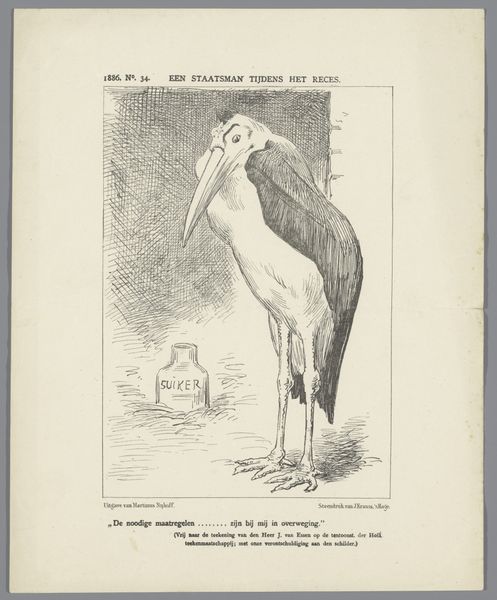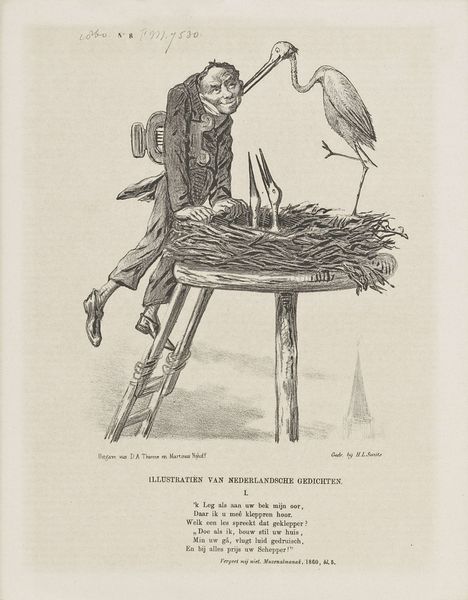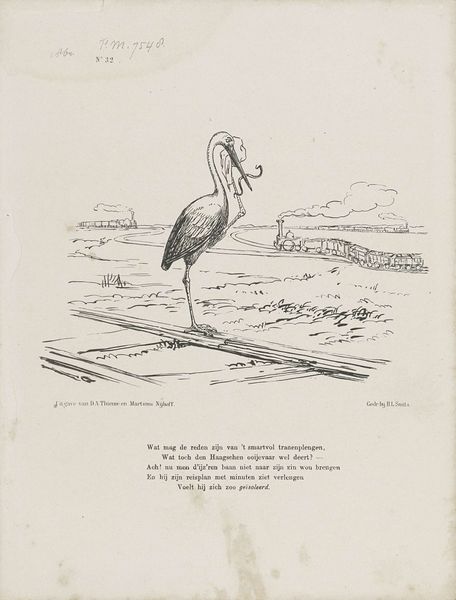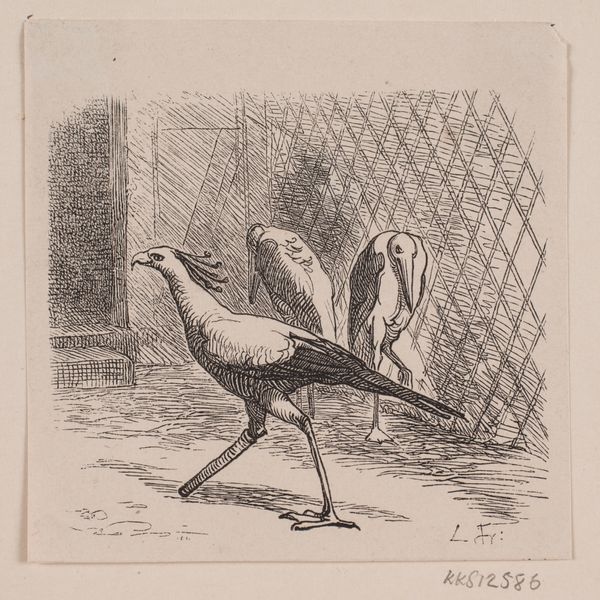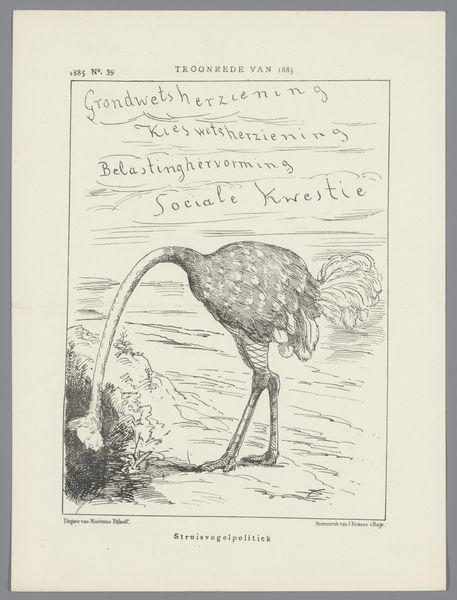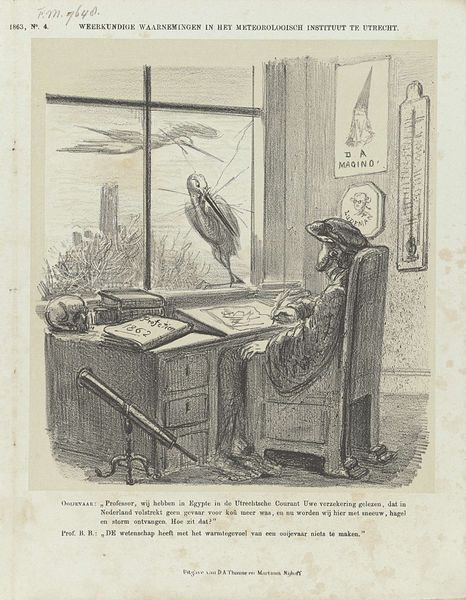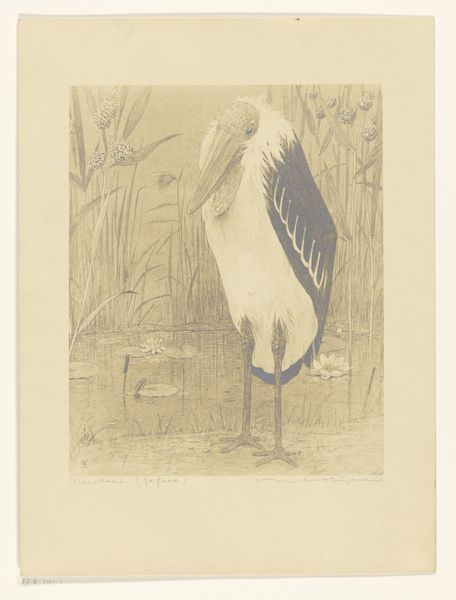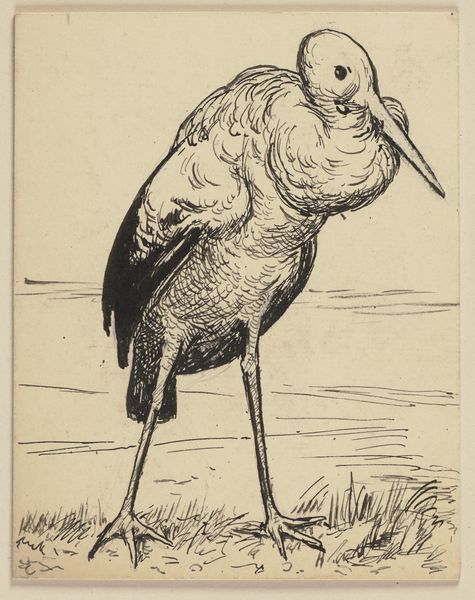
print, engraving
#
16_19th-century
# print
#
caricature
#
figuration
#
line
#
symbolism
#
engraving
Dimensions: height 275 mm, width 215 mm
Copyright: Rijks Museum: Open Domain
Curator: This print, a political caricature titled "Spotprent op de verkiezingen in Den Haag, 1885," uses engraving and line to depict the elections in The Hague. The symbolism feels very pronounced here, and almost rudimentary, though quite impactful for its time I assume. Editor: Absolutely, the straightforward symbolism strikes me too. What do you make of the piece focusing on the printmaking itself? Curator: The engraving process here, the labor, is what speaks volumes. Consider the context: mass production through print allowed these ideas to circulate widely. It democratized political critique, disseminating dissent, humor, or outright ridicule through relatively accessible materials. Each line, each etched mark, is an act of defiance, a visible trace of production contributing to the socio-political conversation. How does that shift your understanding of the central image? Editor: I suppose it amplifies the intended impact of the caricature, moving beyond simple imagery and more towards the accessibility to influence wider socio-political dynamics, almost making it "common knowledge"? The stork carrying balanced scales clearly refers to "fair elections". Seeing the "43" written in the scales also is so striking. I suppose that represents the popular vote? Curator: Precisely. And by examining the print's physical production, we begin to understand how art becomes a powerful force in shaping public opinion, acting as a physical artifact embedded in material circumstances, right? Now, think about consumption – who do you imagine was the target audience, and how might they have interpreted this print based on their own economic and social standing? Editor: Wealthier or less wealthy citizens? Considering the cost of paper and printing in 1885. Curator: Exactly. Material constraints inform consumption and influence what can be conveyed! The beauty of a materialist perspective reveals art as more than just pretty pictures, don't you agree? It gives power back to the artist, the process, and also society. Editor: Definitely, considering it this way adds so many layers that wouldn't be immediately visible. I guess I will start looking at other artworks through this viewpoint.
Comments
No comments
Be the first to comment and join the conversation on the ultimate creative platform.
